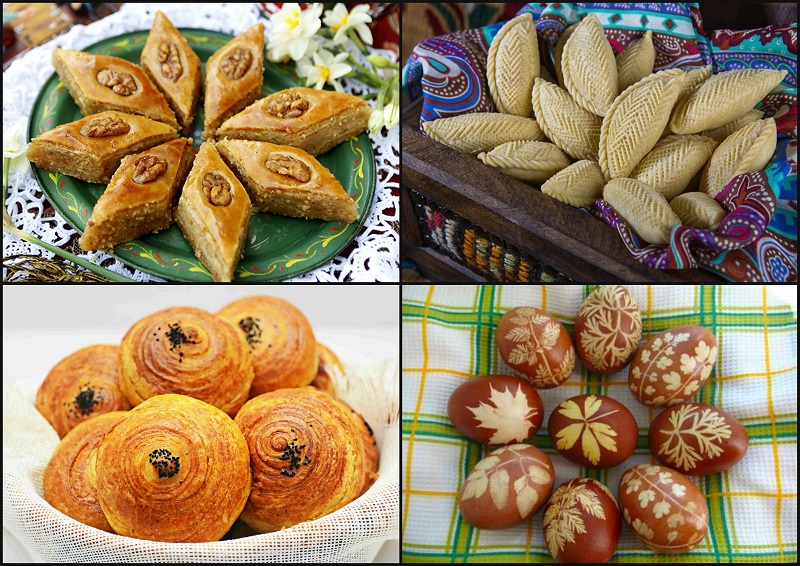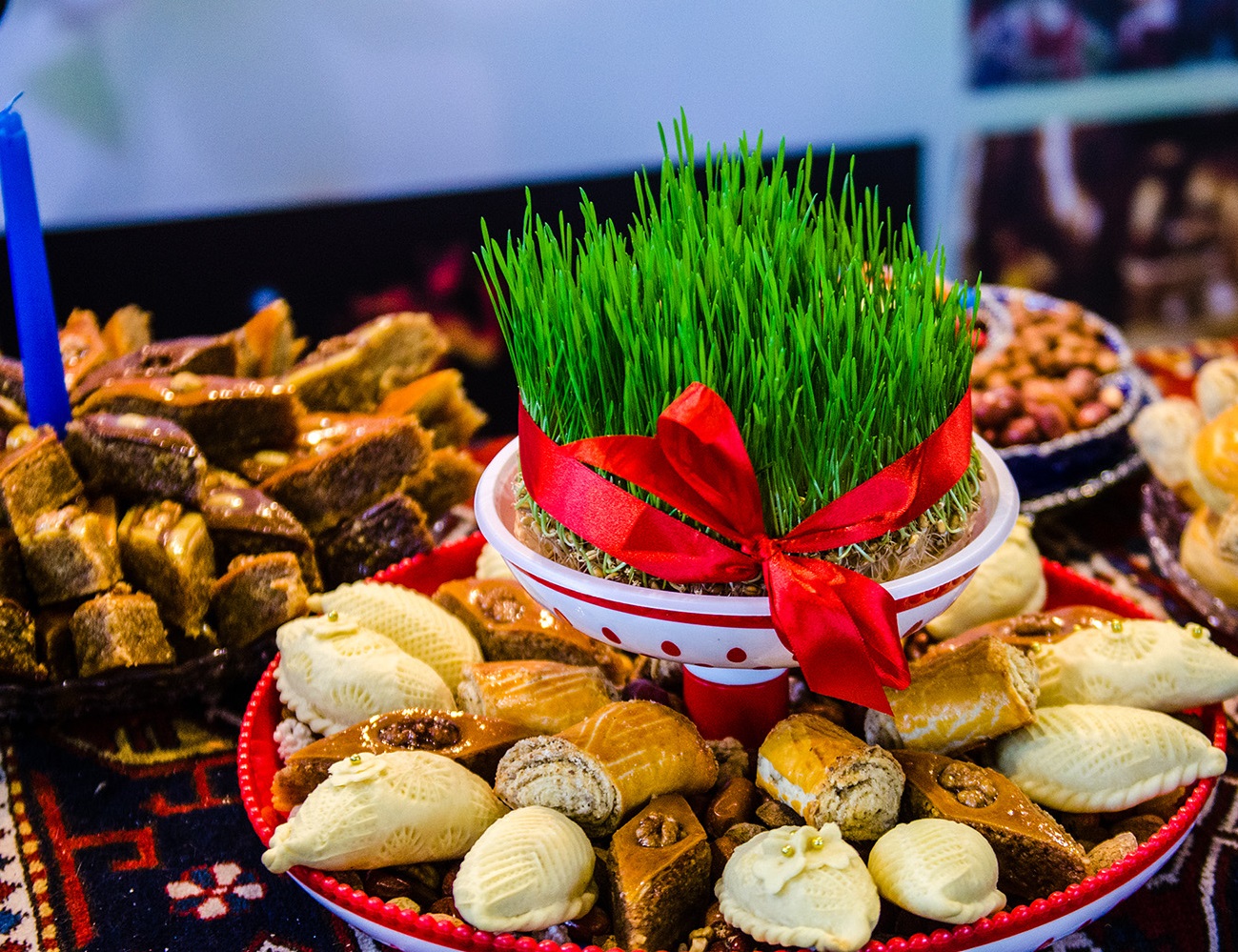Novruz Holiday has begun for all those living in the Caspian region, where the holiday welcomes in the spring and says goodbye to winter.
Xonça, a decorative tray in each home that is an iconic part of celebrations that take place on and around Novruz, reminds children and families of the festivities’ arrival. Decorating an oval tray with traditional foods and items date to the medieval era in Azerbaijani history during a holiday.
In Azerbaijan, a xonça must contain seven things that start with “s” in the Azerbaijani language and symbolize elements and items seen in nature.
The most important is samani, green sprouting wheat, is believed to be the most ancient attribute added to the xonça, and is usually placed at the center of the tray, symbolizing that life stands at the center of everything. Growing wheatgrass symbolizes the end of an icy winter and welcoming spring, with the hope of a rich harvest and abundance throughout the year. After Novruz celebrations come to a close, the samani is not thrown out with the trash; it must be left to float on running water.
Special pastries prepared during the holiday, such as pakhlava, shekerbura and goghal, make xonça not just beautiful and meaningful but tasty as well. The three types of sweets have an ancient significance, and bear astronomical signs that pertain to the sky, sun, moon and the stars. Round shaped, toasted and crispy orange-yellow colored goghal represents the sun, while half-circle or crescent-shaped shekerbura symbolize the moon. Pakhlava represents both the sky and stars, as the seven layers of filo dough, cut into diamond shapes, are meant to symbolize the layers of the sky. A hazelnut kernel placed in the center of each piece represents the stars.

No xonça is complete without colorful, dyed eggs placed next to the samani. The eggs represent the revival of nature and spring’s arrival. Friends and family will each hold an egg, which are hard-boiled, and tap them together to signify peace and friendship. The person holding the cracked egg is considered the loser of the little game, and must do a favor for the winner.
Lighting candles placed around the xonça means the family is expecting the year to be healthy, lucky and prosperous. Candles are stuck on the edge of tray, one for each member of the family, which are lit by the head of the household, who prays for divine blessings and abundance throughout the year.







 Russian Foreign Minister Sergei Lavrov has reasserted that Moscow has no intentions to stop the fighting in Ukraine, even if peace talks commence.
Russian Foreign Minister Sergei Lavrov has reasserted that Moscow has no intentions to stop the fighting in Ukraine, even if peace talks commence.
 Iran has refuted reports of alleged damage to Shimon Peres Negev Nuclear Research Centre located southeast of Dimona, Israel, during the recent air...
Iran has refuted reports of alleged damage to Shimon Peres Negev Nuclear Research Centre located southeast of Dimona, Israel, during the recent air...
 Iran and Pakistan have signed eight cooperation documents in various fields, and agreed to strengthen ties to fight terrorism in the region.
Iran and Pakistan have signed eight cooperation documents in various fields, and agreed to strengthen ties to fight terrorism in the region.



